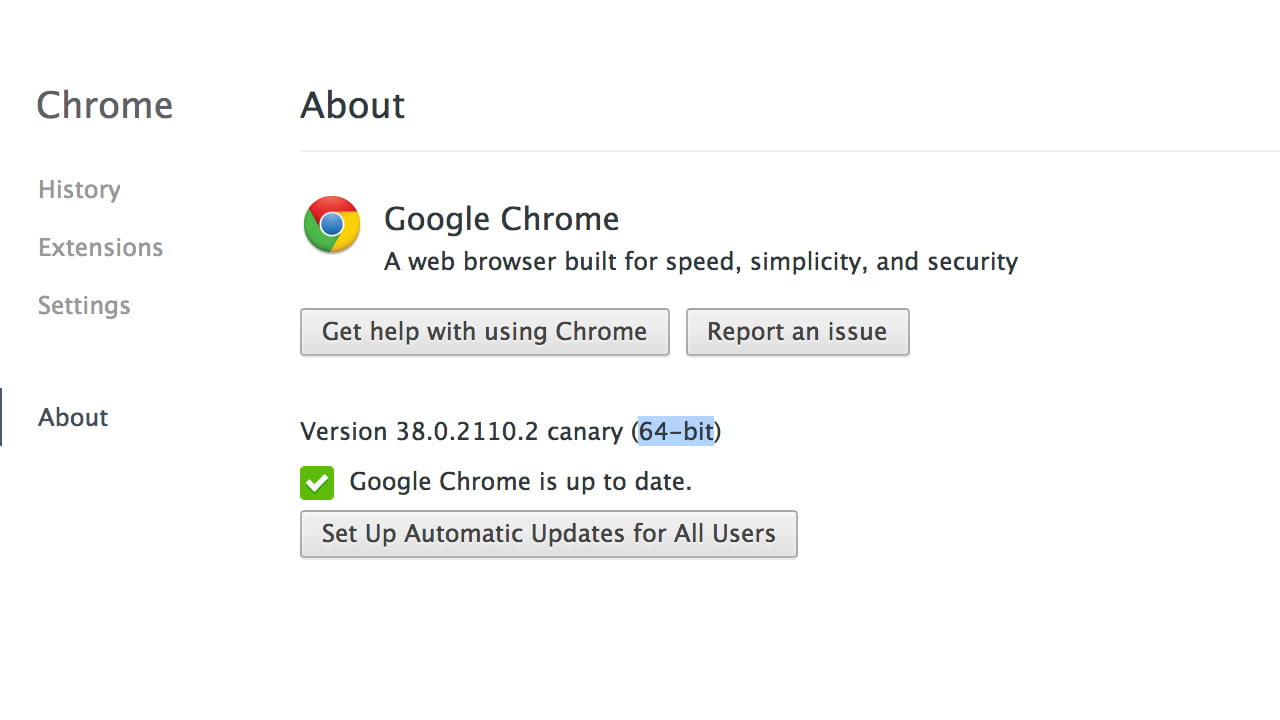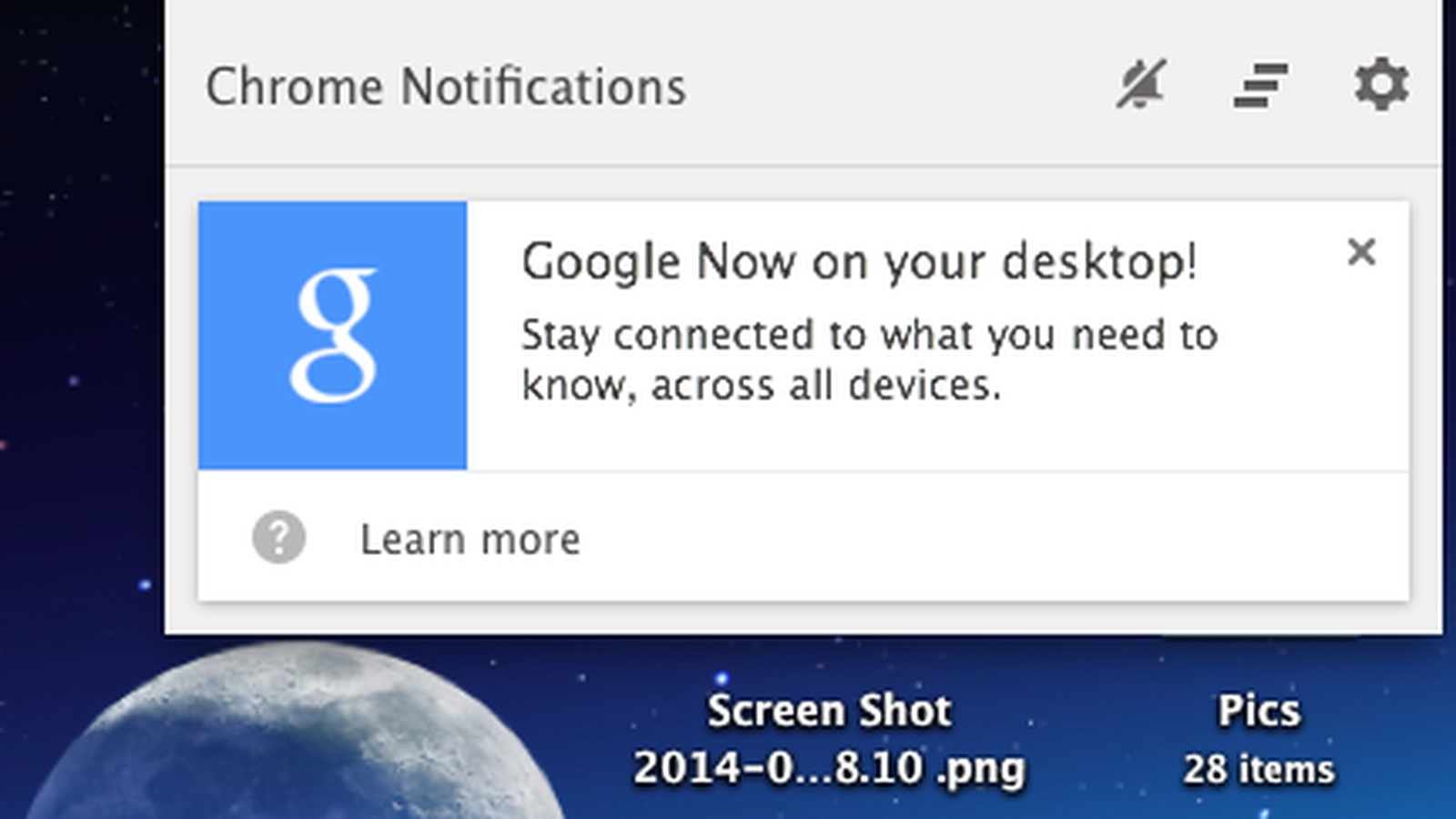
Getting Involved > Chrome Release ChannelsContents - 1 Channels
- 3 What should I do before I change my channel?
Chrome supports a number of different release channels. We use these channels to slowly roll out updates to users, starting with our close to daily Canary channel builds, all the way up to our Stable channel releases that happen every 6 weeks roughly. ChannelsWindows 64-bitAll channels may be run in parallel -- they install into distinct directories and use dedicated User Data directories. Windows 32-bitAll channels may be run in parallel -- they install into distinct directories and use dedicated User Data directories. MacAll channels may be run in parallel -- they install into distinct directories and use dedicated User Data directories. AndroidiOSLinuxHow do I choose which channel to use?The release channels for chrome range from the most stable and tested (Stable channel) to completely untested and likely least stable (Canary channel). You can run all channels alongside all others, as they do not share profiles with one another. This allows you to play with our latest code, while still keeping a tested version of Chrome around. - Stable channel: This channel has gotten the full testing and blessing of the Chrome test team, and is the best bet to avoid crashes and other issues. It's updated roughly every two-three weeks for minor releases, and every 6 weeks for major releases.
- Beta channel: If you are interested in seeing what's next, with minimal risk, Beta channel is the place to be. It's updated every week roughly, with major updates coming every six weeks, more than a month before the Stable channel will get them.
- Dev channel: If you want to see what's happening quickly, then you want the Dev channel. The Dev channel gets updated once or twice weekly, and it shows what we're working on right now. There's no lag between major versions, whatever code we've got, you will get. While this build does get tested, it is still subject to bugs, as we want people to see what's new as soon as possible.
- Canary build: Canary builds are the bleeding edge. Released daily, this build has not been tested or used, it's released as soon as it's built.
- Other builds: If you're extra brave, you can download the latest working (and that's a very loose definition of working) build from download-chromium.appspot.com. You can also look for a more specific recent build by going to the Chromium continuous build waterfall, looking at the number near the top under 'LKGR', and then going to this Google Storage bucket and downloading the corresponding build.
Note: Early access releases (Canary builds and Dev and Beta channels) will be only partly translated into languages other than English. Text related to new features may not get translated into all languages until the feature is released in the Stable channel. What should I do before I change my channel?Back up your data!Before you switch, you should make a backup of your profile (bookmarks, most visited pages, history, cookies, etc). If you ever want to switch back to a more stable channel, your updated profile data might not be compatible with the older version. Make a copy of the User DataDefault directory (for example, copy it to 'Default Backup' in the same location). The location depends on your operating system: Windows XP:
- Stable, beta, and dev channels: Documents and Settings%USERNAME%Local SettingsApplication DataGoogleChromeUser DataDefault
- Canary builds: Documents and Settings%USERNAME%Local SettingsApplication DataGoogleChrome SxSUser DataDefault
Windows Vista, 7, 8 or 10:
- Stable channel: Users%USERNAME%AppDataLocalGoogleChromeUser DataDefault
- Beta channel:Users%USERNAME%AppDataLocalGoogleChrome BetaUser DataDefault
- Dev channel:Users%USERNAME%AppDataLocalGoogleChrome DevUser DataDefault
- Canary builds: Users%USERNAME%AppDataLocalGoogleChrome SxSUser DataDefault
Mac OS X:
- Stable channels, as well as older beta and dev channels: ~/Library/Application Support/Google/Chrome/Default
- Beta channel: ~/Library/Application Support/Google/Chrome Beta/Default
- Dev channel: ~/Library/Application Support/Google/Chrome Dev/Default
- Canary builds: ~/Library/Application Support/Google/Chrome Canary/Default
Linux:
- ~/.config/google-chrome/Default
Note:If you're using Explorer to find the folder,you might need to set Show hidden files and folders in Tools> Folder Options... > View.
Reporting Dev channel and Canary build problemsRemember, Dev channel browsers and Canary builds may still crash frequently. Before reporting bugs, consult the following pages: - See bug-reporting-guidlines-for-the-mac-linux-builds before reporting problems in Mac or Linux Dev channel builds
If after reading the above, you think you have a real bug, file it - https://crbug.com/new Going back to a more stable channel- If you decide to switch from Dev to Beta or from Beta to Stable, the new channel will be on an earlier version of Google Chrome. You won't get automatic updates on that channel until it reaches a version later than what you're already running.
- You can uninstall Google Chrome and re-install from https://www.google.com/chrome to go back to an earlier version.
- If you re-install an older version, you might find that your profile is not compatible (because the data formats changed in the newer version you had been running). You'll have to delete your profile data. Delete the User DataDefault folder (see the Before You Change Channels section above for the location). If you made a back up of your Default directory, you can then rename it to Default so that you at least restore some of your previous bookmarks, most visited pages, etc.
- If the installer fails when you attempt to install an older version with a message indicating that your computer already has a more recent version of Chrome or Chrome Frame, you must also uninstall Chrome Frame. After doing so, the newer version of Chrome should install without difficulty.
|
|
Get on the bleeding edge of Chrome to test and use the newest features and tools by setting it up next the stable release channel
Google Chrome has several channels available for download: stable, beta, dev (developer) and canary. In backwards order (the assembly line is canary, dev, beta, stable), this means that the web browser goes through four cycles before getting published as a final, stable, all-public-access version.
Users who are eager to test the upcoming Chrome version and get a glimpse of new features and improvements (although still buggy) may opt for the beta channel. The beta edition gives a preview of the latest tools while still being unpolished. Early feedback is welcomed, even if you're not a developer.
Google Chrome Beta is more than just a simple browser but a service that is dedicated to improving Chrome to give its users the best and high-quality performance. Other than being constantly updated and installed with new features, it functions just the same as the normal Google Chrome. Nightly build for developers. Get on the bleeding edge of the web. Be warned: Canary can be unstable. Download Chrome Canary. Download Google Chrome on your Mac to get a multi-functional web browser that’s easy to use and customize, no matter your skill level. Google Chrome is preferred by two-thirds of browser users across platforms, securing that position by serving as a major platform of compatibility for web apps, and should not be confused for Chrome OS which. And on a Mac, it’s the only one that can be run right alongside Stable. Windows users should find they can run Dev and Beta side by side. Linux users don’t get access to Canary. Chrome Canary is also a better environment for developers than other Chrome channels because it comes with features, flags, and APIs that are new and untested.
Get on the bleeding edge of Chrome
Because Chrome is based on the Chromium engine and because Chromium is open-source, developers are invited to test the dev and/or canary channels, report bugs and, ultimately make Chrome bigger and better before its stable release.
Out of the four, Google Chrome Canary is first to receive new features and tools, dedicated to both developers and early adopters. It's also the most unstable channel, likely to not only crash but also break down completely. However, it's important to know that some of its features might not make it to the stable release if tests show they're faulty or simply unsatisfying.
Can be installed with Chrome Stable side by side
Evidently, Canary is not recommended for regular use. In fact, Google makes it clear that Chrome Canary cannot be set as the default web browser, due to this reason. But, unlike beta or dev, the canary channel can be installed and used with the stable edition side by side.
Canary receives updates daily from a bot that automatically compiles and sends the latest structure of the source tree. This process isn't overlooked by a human, which is enough reason to explain why it's the most unstable Chrome channel.
Filed under
Google Chrome Canary was reviewed by
Elena Opris5.0/5

Load comments
This enables Disqus, Inc. to process some of your data. Disqus privacy policy
Google Chrome Canary 91.0.4435.3
add to watchlist send us an update
send us an update
5 screenshots:
- runs on:
- Windows 10 64 bit
Windows 8 64 bit
Windows 7 64 bit - file size:
- 1.3 MB
- main category:
- Internet
- developer:
- visit homepage
top alternatives FREE
Download Google Chrome Canary For Mac
top alternatives PAID



 send us an update
send us an update
